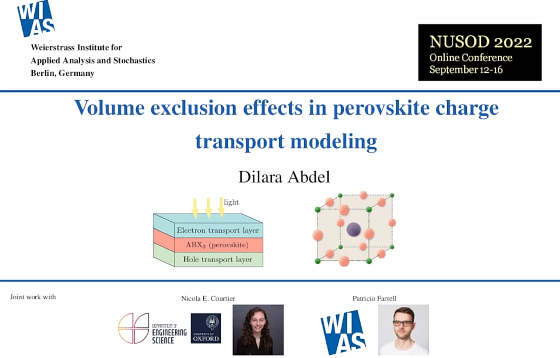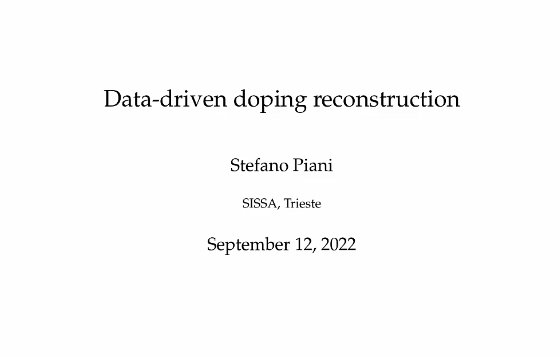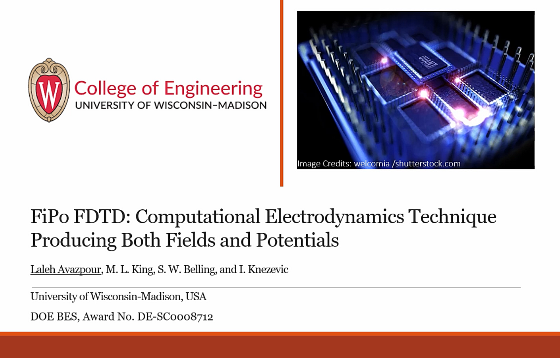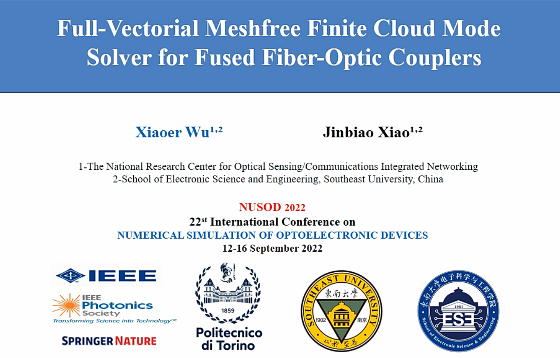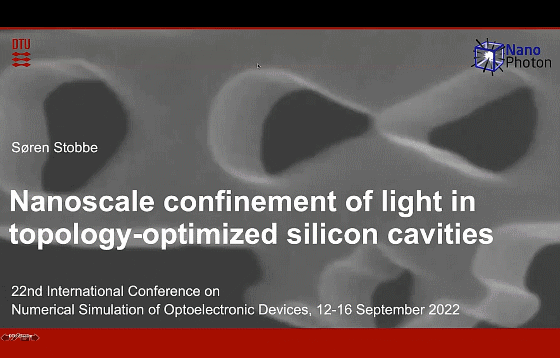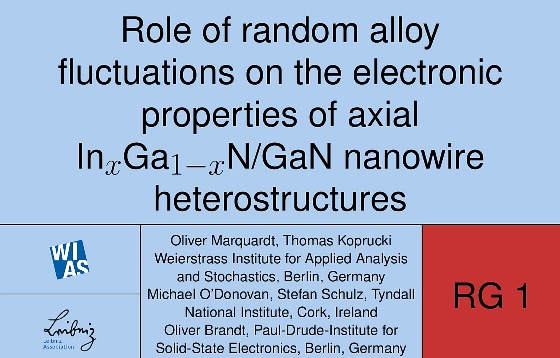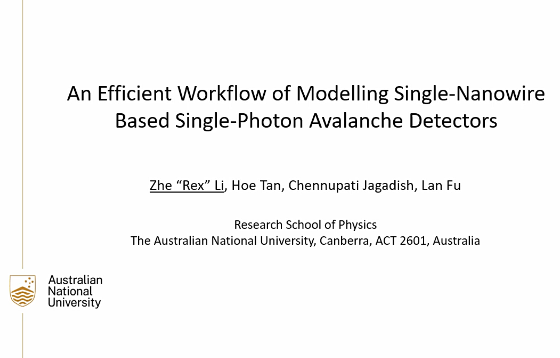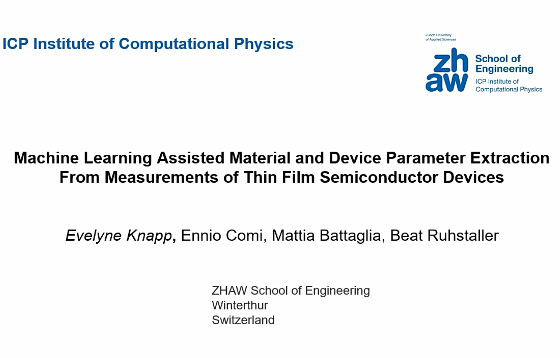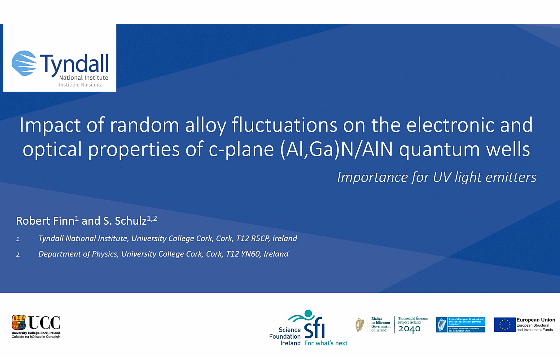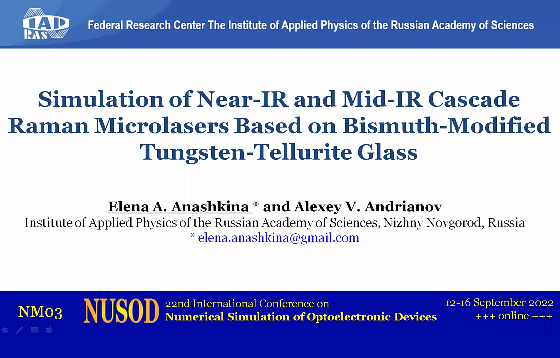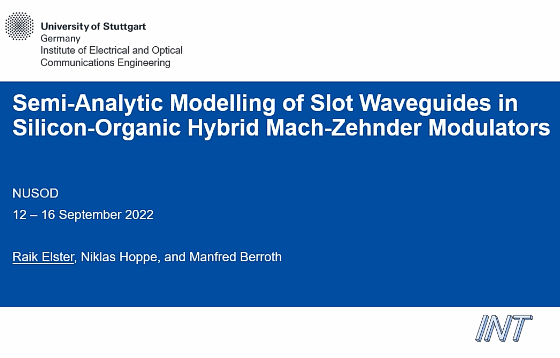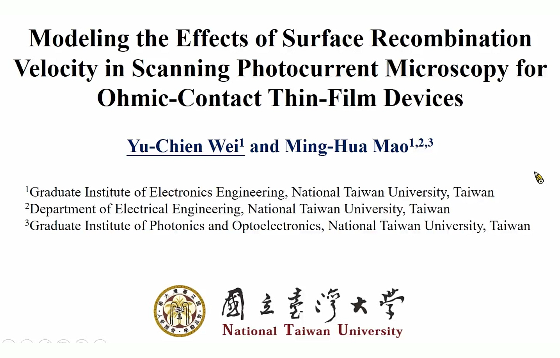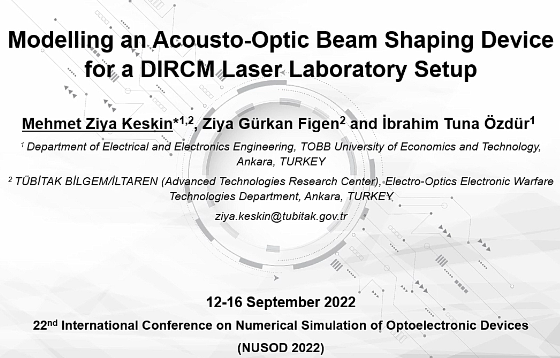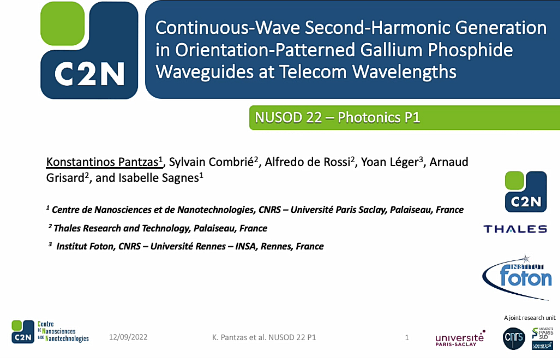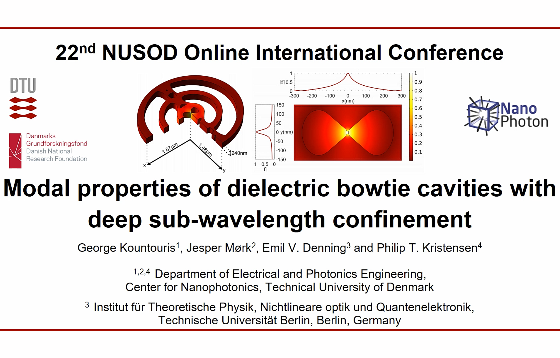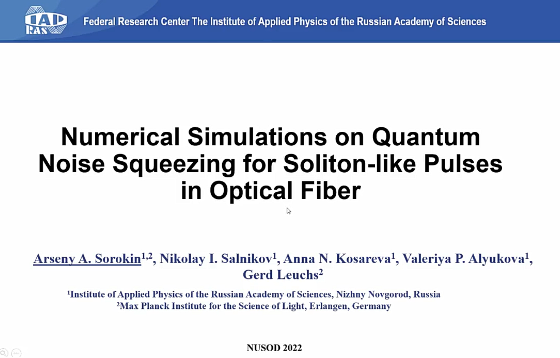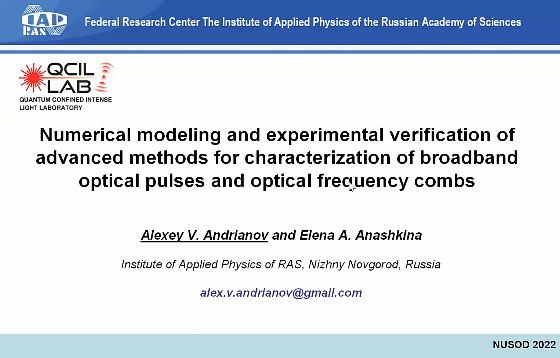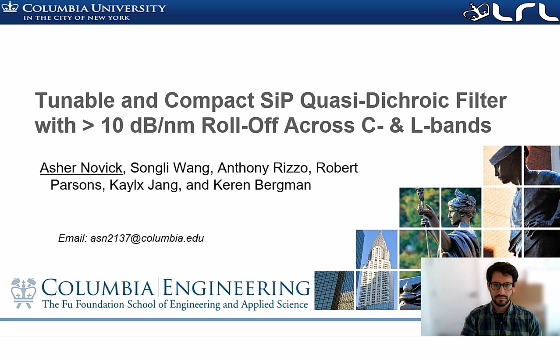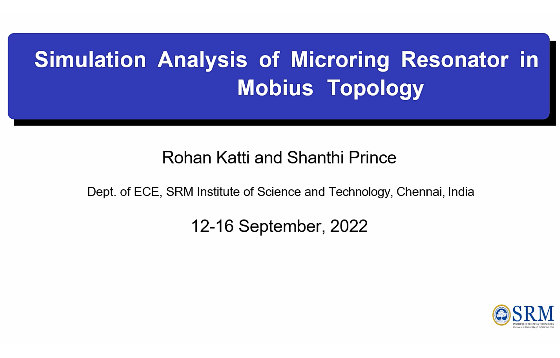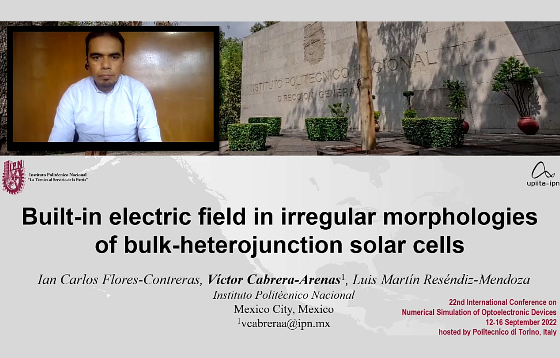Oral51 Videos



We present a finite-difference time-domain (FDTD) technique suitable for coupling with quantum-transport solvers. We derive first-order equations for the electric and magnetic vector potentials and the electric scalar potential which, upon the adoption of the Coulomb gauge, decouple into solenoidal and irrotational equation sets and are sourced by the solenoidal and irrotational parts of the […]
MM07 – Volume exclusion effects in perovskite charge transport modeling
Due to its flexibility, perovskite materials are a promising candidate for many semiconductor devices. For example, Perovskite Solar Cells (PSCs) have become recently one of the fastest growing photovoltaic technologies. In this work, we take volume exclusion effects into account by formulating two different current densities – either treating the mobility or the diffusion as […]
MM08 – Data-driven doping reconstruction
To reconstruct doping profiles via opto-electronic techniques (e.g. LBIC and LPS), we formulate an inverse problem based on the van Roosbroeck system. To solve it, we use neural networks fed with data created from efficient implementations of the forward model. We discuss errors of the reconstructed doping profiles as well as their robustness with respect […]
MM09 – FiPo FDTD: Computational Electrodynamics Technique Producing Both Fields and Potentials
We present the field–potential finite-difference time-domain (FiPo FDTD) algorithm, which solves a set of first-order equations for the electric and magnetic fields (E and H), as well as the magnetic vector potential A and the scalar electric potential φ in the Lorenz gauge. We also present the derivation and implementation of a convolutional perfectly matched […]
MM10 – Full-Vectorial Meshfree Finite Cloud Mode Solver for Fused Fiber-Optic Couplers
A novel full-vectorial meshfree finite cloud mode solver is proposed for analysis of fused optic-fiber couplers, in which the curvilinear coordinate mapping technique is used to map a cloud with curved interface onto a unit square. Numerical results are compared with prior analysis using the finite difference method, showing the validity and utility of the […]
N02 – Influence of random alloy fluctuations on the electronic properties of axial In(x)Ga(1−x)N/GaN nanowire heterostructures
Compound semiconductor heterostructures such as quantum dots, nanowires, or thin films, are commonly subject to randomly fluctuating alloy compositions if they contain ternary and quaternary alloys. These effects are obviously of an atomistic nature and thus rarely considered in heterostructure designs that require simulations on a continuum level for theory-guided design or interpretation of observations. […]
N04 – An Efficient Workflow of Modeling Single-Nanowire Based Single-Photon Avalanche Detectors
Single-photon detector (SPD) as an essential building block for detecting and counting photons, plays a fundamental role in quantum technologies. In this work, we propose an efficient workflow of modeling SPDs based on emerging one-dimensional materials, i.e. nanowires, utilizing avalanche breakdown in reverse biased condition. Comparing to another extensively studied platform, superconducting nanowire SPDs, avalanche […]
NM01 – Machine Learning Assisted Material and Device Parameter Extraction From Measurements Of Thin Film Semiconductor Devices
The simulation of thin film semiconductor devices is challenging, partly due to the unknown material and device parameters. In this contribution, we present two different approaches to determine the missing material and device parameters from measurements. They both have in common that they are based on machine learning (ML) and numerical models. First, a numerical […]
NM02 – Impact of random alloy fluctuations on the electronic and optical properties of c-plane AlxGa1−xN/AlN quantum wells
We present a theoretical study of the electronic and optical properties of c-plane AlxGa1−xN/AlN quantum wells emitting in the ultraviolet-A (UV-A) to UV-C spectral range. Special attention is paid to the impact of alloy fluctuations on the results. We find that random alloy fluctuations in (Al,Ga)N are already sufficient to cause strong carrier localization effects. […]
NM03 – Simulation of Near-IR and Mid-IR Cascade Raman Microlasers Based on Bismuth-Modified Tungsten-Tellurite Glass
We theoretically investigate cascade Raman generation in bismuth-modified tungsten-tellurite glass microlasers, for the first time for microcavities based on TeO2 glasses. The calculated results demonstrate the opportunities of CW Raman generation in the near-IR and mid-IR ranges with CW pump at the wavelength of 1.55 μm. The predicted wavelengths are 1.81 µm, 2.17 µm, 2.70 […]
NM04 – Semi-Analytic Modelling of Slot Waveguides in Silicon-Organic Hybrid Mach-Zehnder Modulators
A semi-analytic approach for modelling the distributed capacitance and the elecro-optic confinement factor of the slot waveguide in a silicon-organic hybrid Mach-Zehnder modulator using the principle of conformal mapping is presented. The results show a deviation of less than 1.3% compared with numerical field simulations.
NM05 – Modeling the Effects of Surface Recombination Velocity in Scanning Photocurrent Microscopy for Ohmic-Contact Thin-Film Devices
We studied numerically the carrier transport and confirmed the feasibility of our scanning photocurrent microscopy model in the minority carrier decay length extraction under different surface recombination velocities at the surfaces of ohmic-contact thin-film devices.
NM06 – Modelling an Acousto-Optic Beam Shaping Device for a DIRCM Laser Laboratory Setup
Directed Infrared Counter Measure (DIRCM) laser laboratory setups are used to mimic the real life DIRCM system and IR heat-seeking missile engagement scenarios in isolated laboratory environments. Typically, the output beam of a mid-infrared (Mid-IR) laser source is modulated in time using an acousto-optic (AO) modulator (AOM). Following the AOM in the optical path, within […]
P01 – Continuous-Wave Second-Harmonic Generation in Orientation-Patterned Gallium Phosphide Waveguides at Telecom Wavelengths
A new process to produce Orientation-Patterned Gallium Phosphide (OP-GaP) on GaAs with almost perfectly parallel domain boundaries is presented. Taking advantage of the chemical selectivity between phosphides and arsenides, OP-GaP is processed into suspended shallow-ridge waveguides. Efficient Second-Harmonic Generation from Telecom wavelengths is achieved in both Type-I and Type-II polarisation configurations. The highest observed conversion […]
P02 – Modal properties of dielectric bowtie cavities with deep sub-wavelength confinement
We present a quasinormal mode analysis of a dielectric bowtie cavity with deep sub-wavelength confinement. The cavity – which is based on an inverse design by topology optimization – exhibits a remarkable sensitivity to local shape deformations, which we show to be well described by perturbation theory.
P03 – Numerical Simulations on Quantum Noise Squeezing for Soliton-like Pulses in Optical Fiber
Generation of light with nonclassical properties, such as squeezed light, has gathered a lot of attention because of possible uses in such areas as quantum state engineering, quantum imaging, continuous variable quantum computing, and detection of gravitational waves. Squeezed light is generally produced by transporting light through a nonlinear medium. One such media is Kerr-nonlinear […]
P04 – Numerical modeling and experimental verification of advanced methods for characterization of broadband optical pulses and optical frequency combs
We propose novel linear method for measuring ultrafast pulse trains with extremely high pulse repetition rates that are commonly generated in nonlinear microresonators. The method combines single-shot spectral interferometry with the reference pulses and an advanced version of the frequency resolved optical gating algorithm to reconstruct the initially unknown reference pulses.
P05 – Tunable and Compact SiP Quasi-Dichroic Filter with ≥10 dB/nm Roll-Off Across C- & L-bands
We report simulated performance for an integrated and compact silicon photonic quasi-dichroic filter with ≥10 dB/nm roll-off and ≥20 dB extinction ratio between pass and stop bands. Additionally, the cutoff wavelength and compensation for fabrication error are each thermally tunable. The functional dichroic bandwidth is ≈80 nm, which spans most practical use cases.
P17 – Simulation Analysis of Microring Resonator in Mobius Topology
In this paper, a microring resonator in Mobius topology is modelled and simulation analysis is carried out. The free spectral range of this silicon-on-insulator based photonic device is found to be 23.4 nm. This structure of microring resonator finds place in various applications such as sensors, polarization analysis, wavelength-selective reflectors.
SC01 – Built-in electric field in irregular morphologies of bulk-heterojunction solar cells
This paper theoretically analyzes the built-in electric field distribution in bulk heterojunction solar cells. The approach proposed leads to explore the impact of regular and irregular morphologies on the performance of these devices. The width of the depletion region at the donor-acceptor interface is set by the doping concentration. The proposed analysis resulted in the […]


